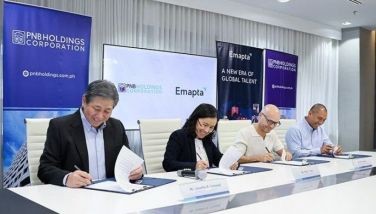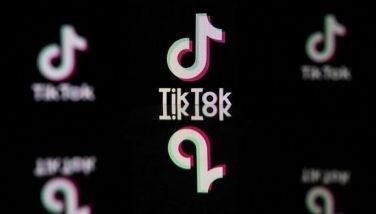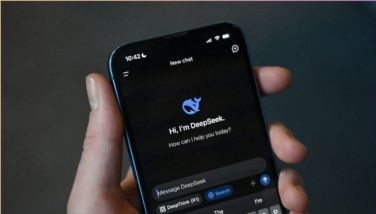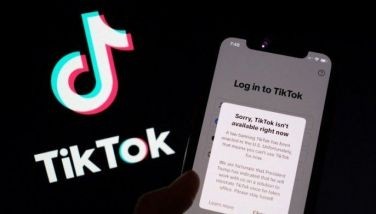Bullish on Bluetooth
September 27, 2002 | 12:00am
 In the Philippines where people exhibit an insatiable predilection to advanced mobile technologies, the consumer marketing potentials of Bluetooth are bright.
In the Philippines where people exhibit an insatiable predilection to advanced mobile technologies, the consumer marketing potentials of Bluetooth are bright.
For this reason, the Advanced Science and Technology Institute (ASTI), an attached agency of the Department of Science and Technology, has kept itself busy since last year in its first attempt to develop a complete Bluetooth System-on-a-Chip (SoC) solution within a five-year period.
Bluetooth is a fast emerging wireless technology specification for low-cost, small-sized, low-power, short-range radio solution that enables communication between electronic devices (mobile computers, phones, other portable and handheld devices) that are within close proximity to each other. With Bluetooth’s high market projection around the world, ASTI is motivated to develop a Bluetooth software package that is original (government-owned intellectual property) and marketable here and abroad.
ASTI’s Bluetooth effort began in February 2001 and now its Computer Software Division (CSD) is in the second stage of developing a Bluetooth Host-side Protocol Stack. Before the year is over, a complete protocol stack portable to different operating systems is expected, plus firmware and hardware development should have been accomplished. This means that by 2003, the agency should have a complete Bluetooth Chipset, by 2004 a Bluetooth single-chip solution, and by 2005 a complete System-on-a-Chip.
The rising demand for smaller yet more powerful handheld devices for personal communication and computing has prompted developers to combine large digital circuits in a single chip to achieve a good degree of integration. But the market is getting more sophisticated, so to push the envelope further researchers are now looking at a System-on-a-Chip design as a viable solution.
The development of the Bluetooth Protocol Stack runs in parallel with two other complementary efforts by the Radio Frequency Microelectronics Project team that is developing RFICs (Radio Frequency Integrated Circuits) in the microwave frequency, and by the Digital Microelectronics Project team that is developing an ARM (Advanced RISC Microprocessor) core.
"The Bluetooth project united the various efforts of the different divisions of ASTI into a single project," says engineer Bienvenido Galang Jr., science research specialist II at ASTI-CSD.
"We’re not quite sure yet what will happen after the fifth year. But probably what we want to do later is to move on to the application side on top of our stack," says Galang.
Galang’s team of five young software engineers recently went through the process of establishing the correctness and validity of their Protocol Stack vis-a-vis an Ericsson Bluetooth Application Toolkit. They are also in the process of porting their models to Microsoft Windows.
The entire project has an initial funding of about P16 million, which is not enough, says Peter Antonio Banzon, supervising science research specialist at ASTI and officer-in-charge of the CSD.
Banzon says the size of their team alone is an indication that they can use more resources, noting that other organizations developing protocol stacks usually have over 20 engineers to complete development work in two years.
It is the Philippine market’s openness to mobile technology that inspires the project. Banzon projects that Bluetooth is going to be bigger than wireless LAN in the long run. With demand already on the horizon, the ASTI Bluetooth team has enough reason to develop its competencies and skills in mobile and wireless technology and even apply them to other areas in the future, Banzon says.
"The Philippines is very receptive to mobile technology. In addition, we know there are many good programmers and software developers in the country. Mobile and wireless applications are going to be very important in the Philippines," he adds.
Banzon says the main thing that is stopping local developers from designing mobile and wireless applications is access to inexpensive protocol stacks. This is why the government-run agency will make its Bluetooth Application Stack available first and foremost to local developers at an affordable price.
"We are interested in the domestic market to enable start-ups and help developers. But we have already received communications from some foreign parties that are interested in what we are developing," Banzon says.
Galang, on the other hand, says there are customers willing to pay a huge sum for a Bluetooth Protocol Stack. "But we plan to sell our protocol stack to local developers at a low cost so they can start developing their own Bluetooth applications. The commercially available stacks can cost from $150,000 to $200,000, which is a very big initial investment for a local developer."
"One advantage of using our protocol stack is the fact that the country owns all of its intellectual property rights. If the developers sell their applications abroad using our protocol stack, the revenue comes back to the country," Galang says.
ASTI officials see nearly endless possibilities for Bluetooth applications. Bluetooth can be used for eliminating the need for wired connections between electronic products and accessories; transferring and synchronizing files between devices; connecting to localized content services in public areas; and functioning as remote controls, keys, tickets and e-cash wallets.
The Bluetooth wireless technology uses the 2.4GHz band, which is supposedly an unlicensed band. Any device designed for use in an unlicensed band should be designed for robustness in the presence of interference.
But making its forthcoming wireless technology solutions robust is not the issue that’s hanging over ASTI’s Bluetooth project. The possible glitch to the project is the availability of the 2.4 GHz ISM (industrial scientific and medical) band, which the National Telecommunications Commission (NTC) has licensed for the use of the Manila Electric Co. (Meralco), the country’s biggest electric power distributor.
So far, the NTC has expressed its intention to clean up the frequency spectrum for wireless communications to give way to new mobile communication technologies such as 3G and Bluetooth.
Banzon is confident that both the NTC and Meralco realize that sooner or later they will need to free up the 2.4 GHz frequency.
"The latest we heard is that if Meralco doesn’t complain or if none of its systems will be affected by our system, then we’re all right; we can buy our equipment and use them. Otherwise, we have to lower our (SoC) power. But that’s one nice thing about Bluetooth; it’s inherently low powered," says Banzon.
ASTI is a member of the Bluetooth Special Interest Group (SIG), a trade association of major telecommunications, computing and network industries, that is pushing for the development of the technology and introducing it to the market. Its lead members include 3Com, Lucent Technologies, Ericsson, IBM, Intel, Microsoft, Motorola, Nokia and Toshiba, and hundreds of associate and adopter member-companies.
BrandSpace Articles
<
>
- Latest
Latest
Latest
February 28, 2025 - 12:46pm
February 28, 2025 - 12:46pm
February 15, 2025 - 11:36am
February 15, 2025 - 11:36am
January 29, 2025 - 9:47am
By Glenn Chapman | January 29, 2025 - 9:47am
January 27, 2025 - 7:01pm
By Oliver Hotham | January 27, 2025 - 7:01pm
January 19, 2025 - 12:39pm
By Alex Pigman | January 19, 2025 - 12:39pm
Recommended



























